Easily switch between Implicit and Explicit solvers for your different runs.

Ansys LS-DYNA Multiphysics Solver
LS-DYNA software offers the most cutting edge explicit solver technology, and along with its wide range of contact algorithms and rich material database, LS-DYNA enables the user to simulate sophisticated explicit dynamic systems with high fidelity and ease.
LS-DYNA excels at simulating short duration, high intensity loading scenarios between solid to solid dynamic interaction, and with their comprehensive set of contact types, along with its fast solution processing. Simulating explicit dynamics has never been easier.
Simulate the Response of Materials to Short Periods of Severe Loading
Ansys LS-DYNA is the most used explicit simulation program in the world and is capable of simulating the response of materials to short periods of severe loading. Its many elements, contact formulations, material models and other controls can be used to simulate complex models with control over all the details of the problem.
Engineers can tackle simulations involving material failure and look at how the failure progresses through a part or through a system. Models with large amounts of parts or surfaces interacting with each other are also easily handled, and the interactions and load passing between complex behaviors are modeled accurately. Using computers with higher numbers of CPU cores can drastically reduce solution times.
Key Features
LS-DYNA elements, contact formulations, material models and other controls can be used to simulate complex models with control over all the details of the problem.
- Implicit and Explicit Solvers
- Frequency Domain Analysis
- ICFD for Incompressible Fluid
- Electromagnetics Solver
- Multiphysics Solver
- Particle Methods
- Contact – Linear and Nonlinear
- Adaptive Remeshing
- Meshless – SPH and ALE
- Advanced CAE
- Supporting Tools
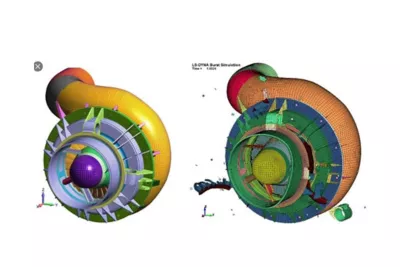
Implicit and Explicit Solvers
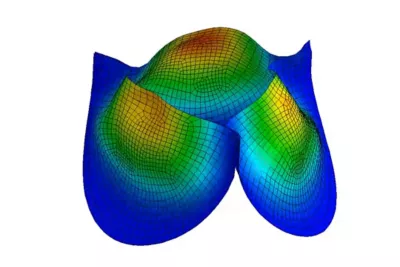
ICFD for Incompressible Fluid
ICFD solver is a stand-alone CFD code that includes a steady-state solver, transient solver, turbulence model for RANS/LES, free surface flows and isotropic/anisotropic porous media flow. Coupled to structural, EM solver and thermal solver.
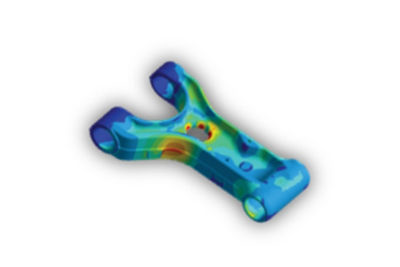
Frequency Domain Analysis
Frequency domain analysis allows LS-Dyna users to explore capabilities such as frequency response function, steady state dynamics, random vibration, response spectrum analysis, acoustics BEM and FEM, and fatigue SSD and random vibration. You can use these capabilities for applications such as NVH, acoustic analysis, defense industry, fatigue analysis and earthquake engineering.

Electromagnetics Solver
EM solves the Maxwell equations using FEM & BEM in the Eddy current approximation. This is suitable for cases where the propagation of electromagnetic waves in air (or vacuum) can be considered as instantaneous. The main applications are magnetic metal forming or welding, induced heating, and battery abuse simulation.
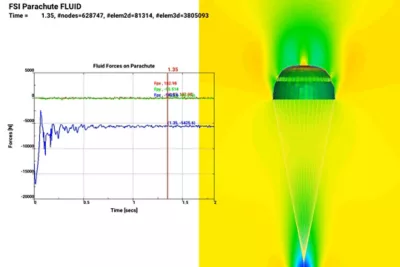
Multiphysics Solver
Multiphysics Solver include ICFD for Incompressible Fluids, electromagnetic solver, EM for battery abuse, and CESE for compressible fluids.
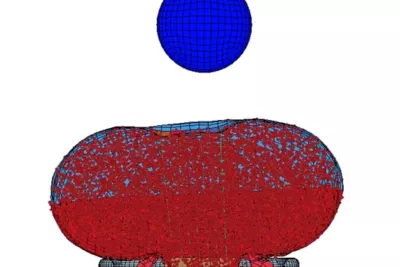
Particle Methods
There are several particle methods using LS-Dyna. AIRBAG_PARTICLE is used for for airbag gas particles which models the gas as a set of rigid particles in random motion. PARTICLE_BLAST for high explosive particles which models high explosive gas and air modeled Particle gas. Discrete element method includes applications such as agriculture and food handling, chemical and civil Engineering, mining, mineral processing.

Contact – Linear and Nonlinear
In LS-DYNA, a contact is defined by identifying (via parts, part sets, segment sets, and/or node sets) what locations are to be checked for potential penetration of a slave node through a master segment. A search for penetrations, using any of a number of different algorithms, is made every time. In the case of a penalty-based contact, when a penetration is found, a force proportional to the penetration depth is applied to resist, and ultimately eliminate the penetration. Rigid bodies may be included in any penalty-based contact but for that contact force to be realistically distributed, it is recommended that the mesh defining any rigid body be as fine as that of a deformable body.

Adaptive Remeshing
Several tools are provided for local refinement of the volume mesh in order to better capture mesh sensitive phenomenon’s such as turbulent eddies or boundary layer separation reattachment. During the geometry set up, the user can define surfaces that will be used by the mesher to specify a local mesh size inside the volume. If no internal mesh is used to specify the size, the mesher will use a linear interpolation of the surface sizes that define the volume enclosure.
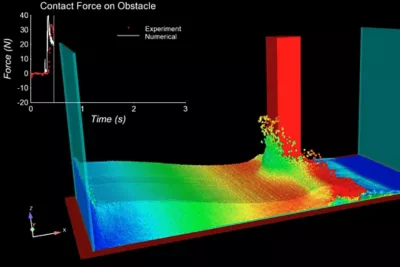
Meshless SPH
SPH method in Ansys LS-DYNA® is coupled with the finite and discrete element methods, extending its range of applications to a variety of complex problems involving multiphysics interactions of explosion or fluid-structure interaction.
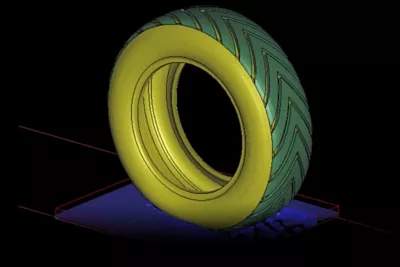
Meshless ALE
Ansys LS-DYNA has two different classes of mesh-free particle solvers: continuum-based smooth particle hydrodynamics (SPH), and discrete particle solvers using the discrete element method (DEM), the particle blast method (PBM) and the corpuscular particle method (CPM). These solvers are used in various applications like hypervelocity impacts; explosions; friction stir welding; water wading; fracture analysis in car windshields, window glass and composite materials; metal friction drilling; metal machining; and high-velocity impact on concrete and metal targets.

Advanced CAE
Peridynamics & SPG
The smoothed particle Galerkin (SPG) method is a new Lagrangian particle method for simulating the severe plastic deformation and material rupture taken place in ductile material failure. The Peridynamics method is another compelling method for brittle fracture analysis in isotropic materials as well as certain composites such as CFRP.
Isogeometric Analysis (IGA)
The isogeometric paradigm employs basis functions from computer-aided design (CAD) for numerical analysis. The actual geometry of the CAD parts is preserved which is in sharp contrast to finite element analysis (FEA) where the geometry is approximated with, potentially higher-order, polynomials. Isogeometric analysis (IGA) has been extensively studied in the past few years in order to (1) reduce the effort of moving between design and analysis representations and (2) obtain higher-order accuracy through the higher-order interelement continuity of the spline basis functions used in CAD.
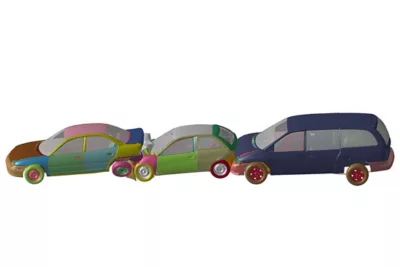
Supporting Tools
LS-OPT
Ansys LS-OPT is a standalone design optimisation and probabilistic analysis package with an interface to Ansys LS-DYNA. It is difficult to achieve an optimal design because design objectives are often in conflict. LS-OPT uses a systematic approach involving an inverse process for design optimization: First you specify the criteria and then you compute the best design according to a mathematical framework.
Probabilistic analysis is necessary when a design is subjected to structural and environmental input variations that cause a variation in response that may lead to undesirable behavior or failure. A probabilistic analysis, using multiple simulations, assesses the effect of the input variation on the response variation and determines the probability of failure.
Together, design optimisation and probabilistic analysis help you to reach an optimal product design quickly and easily, saving time and money in the process.
Typical applications of LS-OPT include:
- Design optimisation
- System identification
- Probabilistic analysis
LS-TaSC
LS-TaSC™ is a Topology and Shape Computation tool. Developed for engineering analysts who need to optimize structures, LS-TaSC works with both the implicit and explicit solvers of LS-DYNA. LS-TaSC handles topology optimisation of large nonlinear problems, involving dynamic loads and contact conditions.
Want to learn more about Ansys simulation solutions?
Complete the form and one of the experts from our Ansys team will contact you to discuss your needs.

